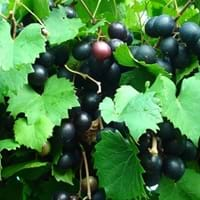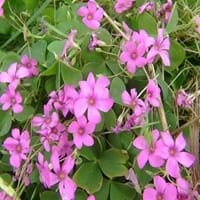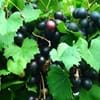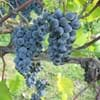Life Span
Perennial
Perennial
Type
Fruit
Bulb or Corm or Tuber
Origin
Southeastern United States, Mexico
South America, Argentina, Brazil
Types
Not available
Oxalis acetosella
Oxalis adenophylla
Oxalis albicans
Oxalis alpina
Habitat
Lowland, sand dunes, Upland
Deep, Hardwood forests
USDA Hardiness Zone
6-10
7-9
Sunset Zone
Not Available
21,22
Habit
Vining/Climbing
Clump-Forming
Minimum Height
Not Available
Flower Color
White, Green
Pink, Light Pink, Rose
Flower Color Modifier
Bicolor
Bicolor
Fruit Color
Green, Burgundy, Plum, Bronze, Brown
Tan
Leaf Color in Spring
Green
Green, Light Green
Leaf Color in Summer
Green
Light Green
Leaf Color in Fall
Green, Gold, Tan
Several shades of Green
Leaf Color in Winter
Light Green
Light Green
Leaf Shape
V-Shaped
Obcordate
Plant Season
Spring, Summer, Fall
Spring, Summer, Fall
Sunlight
Full Sun, Partial Sun
Full Sun, Partial Sun
Type of Soil
Clay, Loam, Sand
Loam, Sand
The pH of Soil
Acidic, Neutral
Acidic, Neutral
Soil Drainage
Well drained
Well drained
Bloom Time
Spring, Late Spring, Early Summer
Spring, Late Spring, Early Summer, Summer, Late Summer, Early Fall, Fall
Tolerances
Pests and diseases, Shade areas
Drought
Where to Plant?
Ground, Pot
Ground
How to Plant?
Layering, Seedlings
Corms or bulbs, From Rhizomes
Plant Maintenance
Medium
Medium
Watering Requirements
Requires regular watering, Water during dry weather
Needs more water during establishment, Water Deeply, Water in morning to avoid prompting diseases
In Summer
Lots of watering
Lots of watering
In Spring
Moderate
Moderate
In Winter
Average Water
Average Water
Soil pH
Acidic, Neutral
Acidic, Neutral
Soil Type
Clay, Loam, Sand
Loam, Sand
Soil Drainage Capacity
Well drained
Well drained
Sun Exposure
Full Sun, Partial Sun
Full Sun, Partial Sun
Pruning
Remove branches that rub together, Remove damaged leaves, Remove dead branches, Remove dead leaves
Cut or pinch the stems, Pinch Tips, Pinching, Remove damaged leaves, Remove dead branches, Remove dead leaves
Fertilizers
Apply 10-10-10 amount, Apply N-P-K, Requires high amount of nitrogen
All-Purpose Liquid Fertilizer, Apply N-P-K
Pests and Diseases
Leaf spot, Nematodes, Powdery mildew
Not Available, Red blotch
Plant Tolerance
Pests and diseases, Shade areas
Drought, Shade areas
Flowers
Insignificant
Showy
Flower Petal Number
Single
Single
Foliage Texture
Medium
Medium
Foliage Sheen
Glossy
Matte
Attracts
Birds
Not Available
Allergy
Not Available
Not Available
Aesthetic Uses
Beautification
Beautification, Cottage Garden, Showy Purposes
Beauty Benefits
Not Available
Not Available
Environmental Uses
Agroforestry
Air purification
Medicinal Uses
anti-inflammatory, Anti-oxidant
Not Available
Part of Plant Used
Fruits, Leaves
Flowers
Other Uses
Sometimes used for making wine, Used to make juice, Used to make yellow dye
Not Available
Used As Indoor Plant
No
No
Used As Outdoor Plant
Yes
Yes
Garden Design
Edible, Fruit / Fruit Tree, Rock Garden / Wall, Screening / Wind Break, Topiary / Bonsai / Espalier, Vine
Container, Groundcover, Mixed Border, Rock Garden / Wall, Wildflower
Botanical Name
VITIS rotundifolia
OXALIS articulata
Common Name
Muscadine
Sorrel, Wood Sorrel
In Hindi
Muscadine
sorrel
In German
Muscadine
Sauerampfer
In French
Muscadine
oseille
In Spanish
Muscadine
alazán
In Greek
μοσχοστάφυλο
οξαλίδα
In Portuguese
Muscadine
alazão
In Polish
Muscadine
szczaw
In Latin
Muscadine
varii,
Phylum
Magnoliophyta
Tracheophyta
Class
Magnoliopsida
Magnoliopsida
Order
Rhamnales
Oxalidales
Family
Vitaceae
Oxalidaceae
Clade
Angiosperms, Eudicots, Rosids
Angiosperms, Eudicots, Rosids
Tribe
Not Available
Not Available
Subfamily
Not Available
Not Available
Difference Between Muscadine and Sorrel
If you are confused whether Muscadine or Sorrel are same, here are some features about those plants to help you choose better. Many people think that these two plants have the same characteristics, but one can see Muscadine and Sorrel Information and learn more about it. Fertilizers required for proper growth of Muscadine are Apply 10-10-10 amount, Apply N-P-K and Requires high amount of nitrogen, whereas for Sorrel fertilizers required are All-Purpose Liquid Fertilizer and Apply N-P-K. Hence, one should know the basic difference between Muscadine and Sorrel if you are planning to have them in your garden to enhance its beauty.
<
Flowering PlantsImportance of Muscadine and Sorrel
Want to have the most appropriate plant for your garden? You might want to know the importance of Muscadine and Sorrel. Basically, these two plants vary in many aspects. Compare Muscadine and Sorrel as they differ in many characteristics such as their life, care, benefits, facts, etc. Every gardener must at least have the slightest clue about the plants he wants to plant in his garden. Compare their benefits, which differ in many ways like facts and uses. The medicinal use of Muscadine is anti-inflammatory and Anti-oxidant whereas of Sorrel is Not Available. Muscadine has beauty benefits as follows: Not Available while Sorrel has beauty benefits as follows: Not Available.
Compare Facts of Muscadine vs Sorrel
How to choose the best garden plant for your garden depending upon its facts? Here garden plant comparison will help you to solve this query. Compare the facts of Muscadine vs Sorrel and know which one to choose. As garden plants have benefits and other uses, allergy is also a major drawback of plants for some people. Allergic reactions of Muscadine are Not Available whereas of Sorrel have Not Available respectively. Having a fruit bearing plant in your garden can be a plus point of your garden. Muscadine has showy fruits and Sorrel has no showy fruits. Also Muscadine is not flowering and Sorrel is not flowering . You can compare Muscadine and Sorrel facts and facts of other plants too.





